Although Wetland Month has come to a close, we wanted to highlight one of the wetland species in honor of the March Species of the Month. At the beginning of this month, social media followers of the LIFE For Species project took part in a vote, as a result, Sphagnum pulchrum was chosen as the species of the month for March.
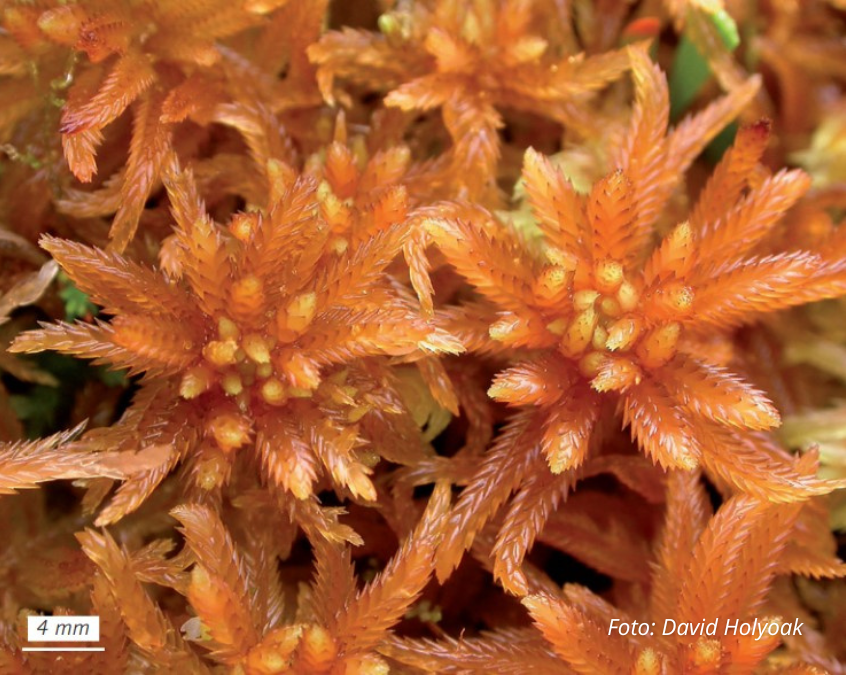
In Latvia, this species is very rare. It can be found in various constantly wet and humid places - in mossy swamps, swampy forests, ditches and on the shores of swampy lakes. In Latvia the common name for the species is “the beautiful sphagnum” and it probably earned this name due to its shades, which vary from yellowish to greenish-brown, and can sometimes even take on a purple hue.

Sphagnum pulchrum is similar to the very common sphagnum (S. fallax), but it is distinguished in nature by its distinct five-rowed branched leaves.
The species of this month - Usnea florida - is a very rare and protected species of lichen in Latvia, which also serves as a clean air indicator.

The species is found throughout the territory of Latvia, but observations are relatively rare. It is difficult to detect because it grows high in the crown of the tree and is only visible when it falls from the tree branches. However, there is also good news - if the lichen has fallen from the tree crown, it is relatively easy to see and recognize. From the other usnea species found in Latvia, Usnea florida is distinguished by its round fruiting bodies or apothecia. Apothecia develops at the ends of branches, reaching up to 1 cm in diameter.
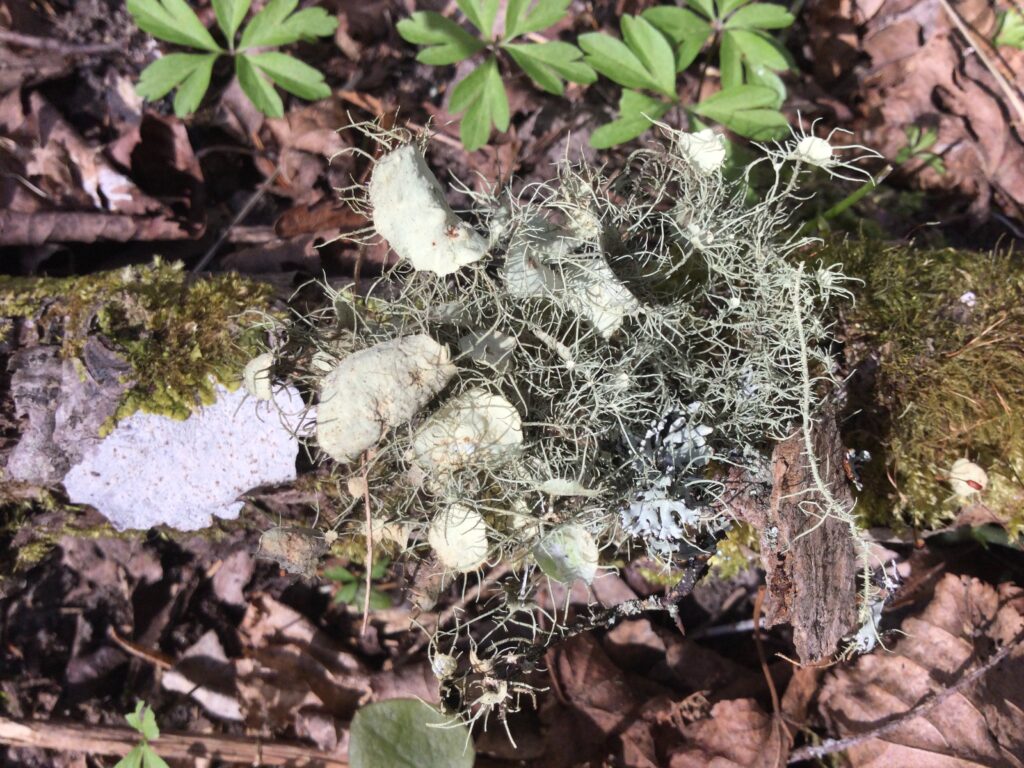
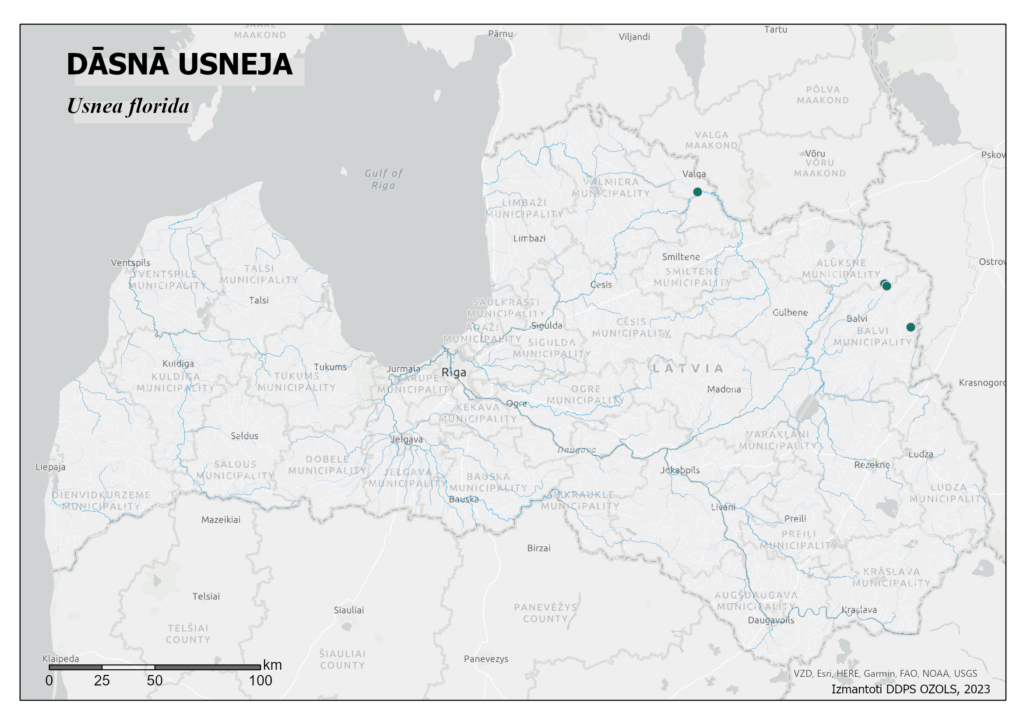
Sources:
Tengmalm’s owl, which has become a rare species in Latvia over the last decades, has been chosen to be the protected species of the month.
Tengmalm’s owl is a small-size owl reaching 235-280 mm in length. The bird's feathers on the back are dark brown with white specks, which together form a row of white spots in the shoulder area. A dark line frames its pale face, forming a pronounced face veil. This is one of the smallest owls in Europe: males weigh only 90-133 g, while females around 112-223 g.
The species is most commonly identified by a typical voice that can be described as a relatively low frequency sound “u-u-u” or “pu-pu-pu” with a truncated sound. Unprovoked birds at the beginning of the breeding season often sing in the same tree as they are about to nest. Relatively often, there is also a “quacking” sound that is relatively easy to blend with, say, the voice of a forest owl. At the beginning and end of the breeding season, one of the more frequently heard voices is a sound like a squirrel cry.

Unfortunately, the species is highly sensitive to interference during the egg laying and hatching period. Even a simple touch on the trunk of the nest tree can disrupt the hatching, causing the female to leave the nest and the eggs.
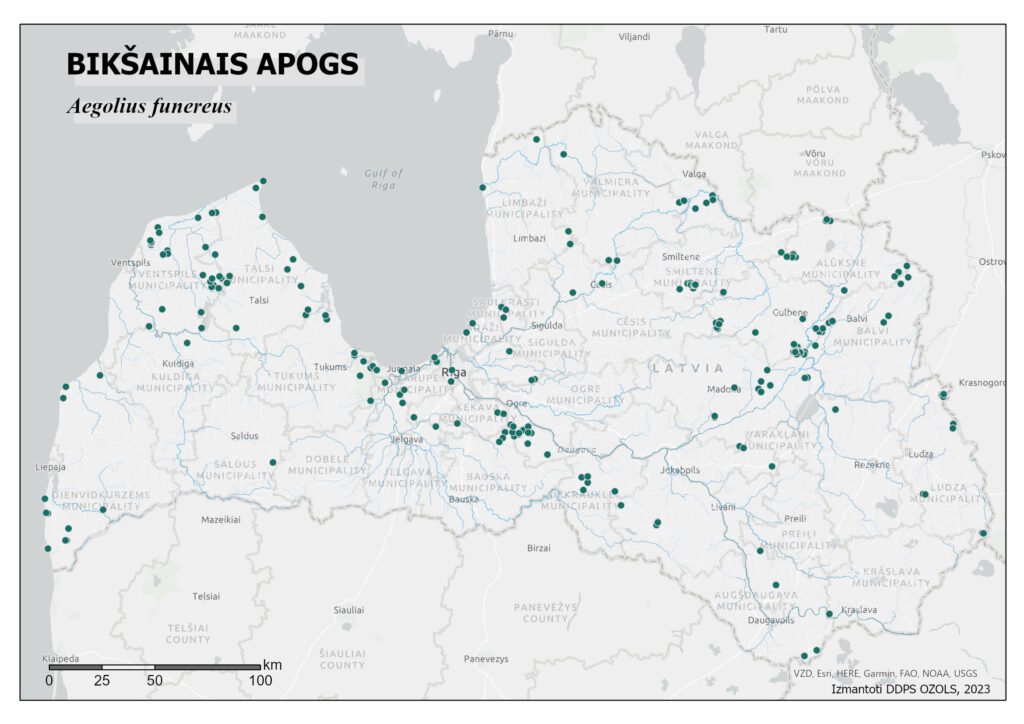
The most significant threat to the species in Latvia is logging, as the bird most often inhabits old mixed and conifer forests that have been affected by economic activity. Weasels can be mentioned as the biggest enemy of the species in nature. In 2018, a program of artificial nests was started in Latvia, within the framework of which 100 cages were prepared for the protection of breams.
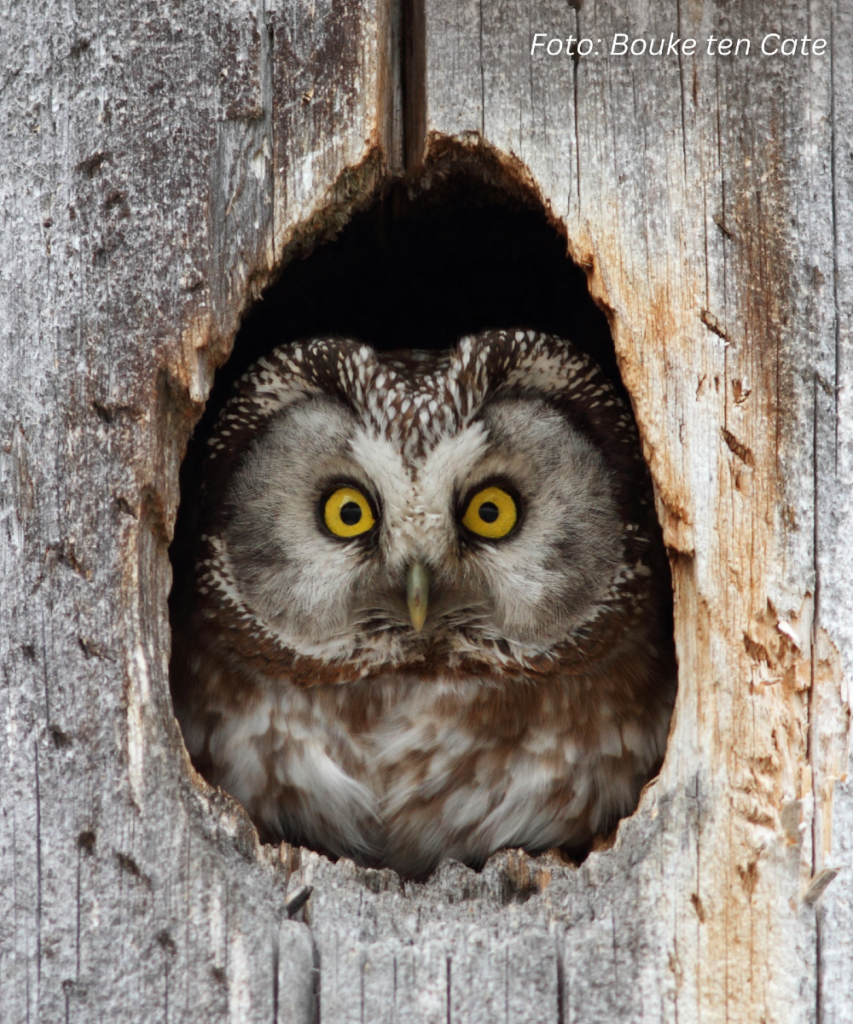
Sources:
Avotiņš jun. A. 2019. Apodziņa Glaucidium passerinum, bikšainā apoga Aegolius funereus, meža pūces Strix aluco, urālpūces Strix uralensis, ausainās pūces Asio otus un ūpja Bubo bubo aizsardzības plāns. Latvijas Ornitoloģijas biedrība, Rīga
The project's species experts are currently working on the preparation of species assessments, gathering information from a variety of data sources. There are species for which data is missing, so experts are also relying on field work to collect the missing data and update the available information.
During the field work, the project experts managed to observe very rare species that have not been seen for a long time, or were even detected in Latvia for the very first time.

On September 24 of 2022, the Society of Mycologists of Latvia had the opportunity to visit Moricsala. There were many interesting finds, and the project expert I. Dāniele was there to witness them. Approaching one of the spruce trees surrounded by observers, project expert I. Dāniele immediately realized that this is the first time she has seen such a mushroom.
On the mossy, rotting soil, golden yellow-brown mushrooms were arranged in a small group. We also found out the first discoverer of this species - it turned out to be Ieva Rožlapa.
Due to the bright and unique appearance of the mushroom, it was not difficult to identify the species - it is a new species for Latvia, Chrysomphalina chrysophylla.
According to GBIF data, this species is found mainly in Europe and North America, also in some places in Asia. It is mainly found in boreal and hemiboreal zone, but it can sometimes also be found in warmer regions, mainly in wet spruce forests, on mossy slopes.
I. Dāniele admits that this species deserves evaluation and inclusion in the Red Book and the list of protected species. So far, only one deposit - so the species is very rare and even critically endangered (CR). Could a Data Deficiency (DD) be considered? Probably no more than many other rare species. The mushroom has a bright enough appearance for it to be discovered by other mushroom experts elsewhere in Latvia.
In the middle of the summer, we shared the news about the findings of the project expert and entomologist N.Savenkovs during field work. The expert had managed to identify a specimen of Sesia bembeciformis species.

The species has a secret lifestyle - it basically lives on the willows of various species. Some specimens have been collected and in the future they will complement the insect collection of the Latvian National Museum of Nature. This species is distinguished by the peculiarities of its life cycle - the larval stage lasts 3-4 years. The species lives in the stems of live plants and the larva feeds on the sap, but is not generally considered a pest.
Considering that the species had not been found in Latvia until now, it does not yet have an official name in Latvian. The appearance of the new species is also interesting - Sesia bembeciformis is a butterfly that looks like a hornet. Despite the appearance of the species, it is peaceful and cannot sting people.

However, Sesia bembeciformis was not the only species newly discovered in Latvia - at the beginning of July, in the vicinity of Krāslava, the project's expert N.Savenkovs managed to discover another new species for Latvia - Simplicia rectalis. We know relatively little about this species.
Several species of butterflies, which are considered very rare in Latvia, were also found during the field work.
After a 60-year break, a rare plant species, Carex distans, has been found in Latvia. It was found by the leading researcher of the Institute of Biology of the University of Latvia, Liene Auniņa, during the expeditions of the LIFE FOR SPECIES project in the 2022 vegetation season.
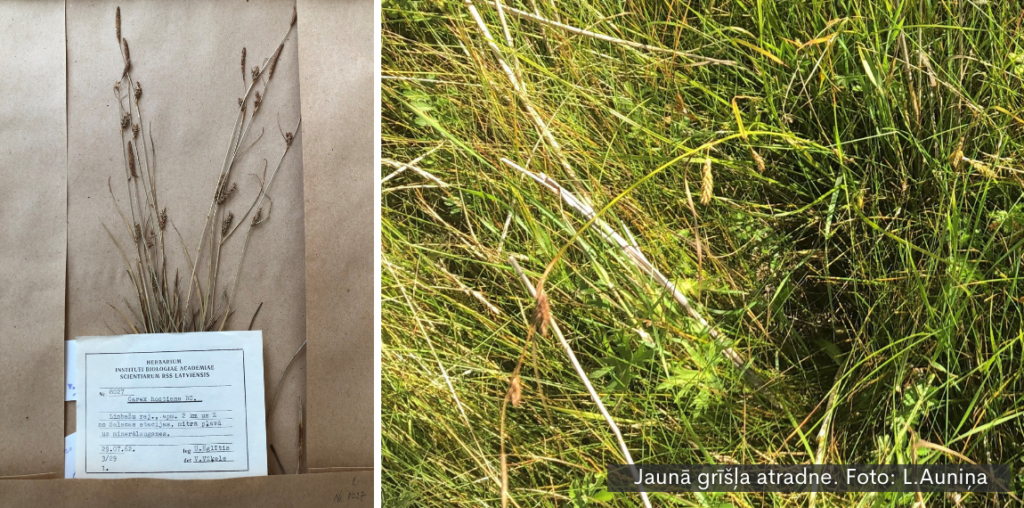
In 1962, the distant sedge was found in the grasslands around Ainaži, but now the species was found in natural, unimproved grassland in Kurzeme. Unfortunately, it was not possible to find the species again in the vicinity of Ainaži. The new find shows that the remote sedge can be found in grasslands, possibly also in marshes, in a narrow strip along the coast of the Baltic Sea and the Gulf of Riga.
LIFE For Species social media followers have chosen the fat dormouse (Glis glis) as the protected species of the month. Thanks to everyone who voted!
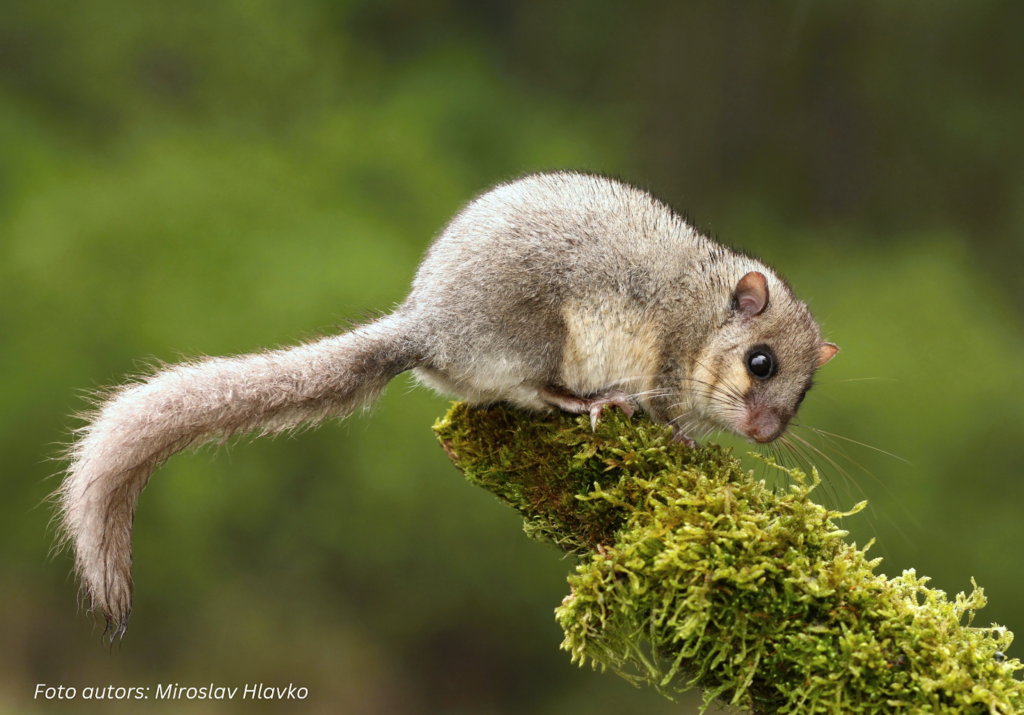
During the month of December, the fat dormouse has gone into hibernation. It is the largest species of dormouse, and it can reach up to 18 cm in length. The animal weighs 100-150 grams, but when preparing for hibernation, the animal's weight can reach up to 200 grams. The upper side of the dormouse is monochromatic - gray or even silvery gray in young specimens, while the sides and underside are distinctly lighter, and white or yellowish-white in adults.

The animal feeds mainly on plant food. Most of the food includes seeds, berries, fruits of a wide variety of plants (mostly only their flesh is eaten, not the skin) and mushrooms. Significantly increased nutrition occurs when acorns and hazelnuts ripen. The fat dormouse lives in trees and is active only at night, except for the winter period, when it spends 7-8 months in hibernation. If there are any unfavorable conditions, such as insufficient food resources, the animal can spend a longer time in a sleeping state. The fat dormouse spends its winter sleep burrowing in the soil, but daytime hiding places are mostly found in tree hollows.
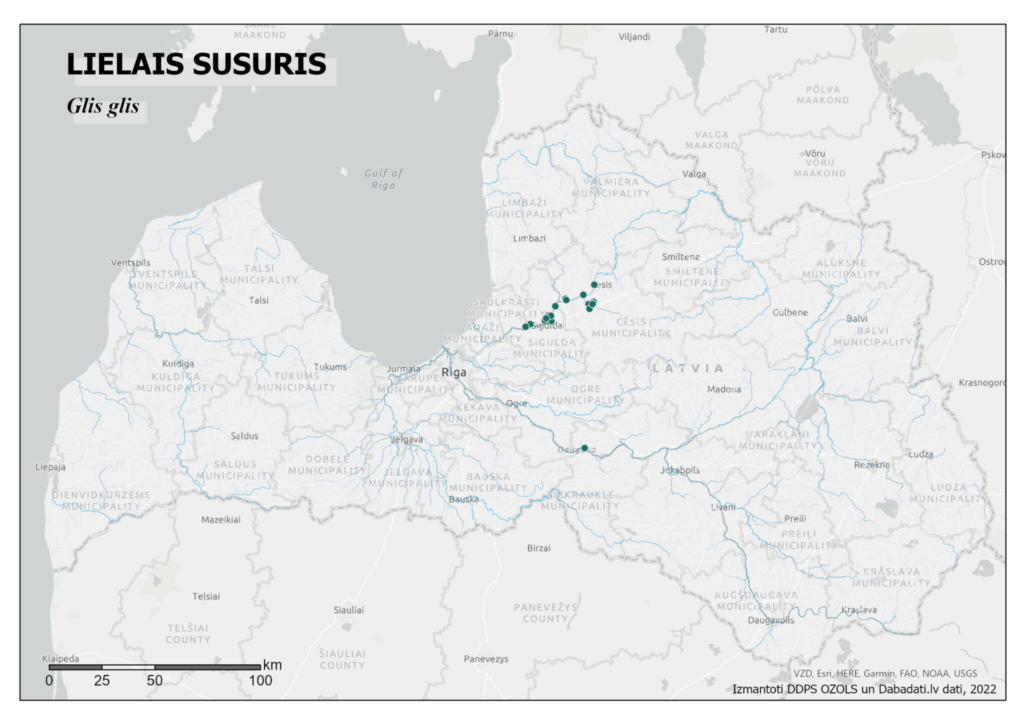
This species can hibernate both alone and together with other members of its species. Hibernation begins in October (adults hibernate earlier than young ones), but the awakening period begins around mid-May. Males wake up first, and in the spring the animals come out of the den having lost around 30-40% of their body weight.
The fat dormouse is threatened by logging, clear-cutting and the death of old oaks. The species is included in the Latvian list of specially protected species
At a time when the greyness of November alternates with a beautiful, white blanket of snow, we have chosen the bright and expressive common tree frog (Hyla orientalis) as the protected species of the month!
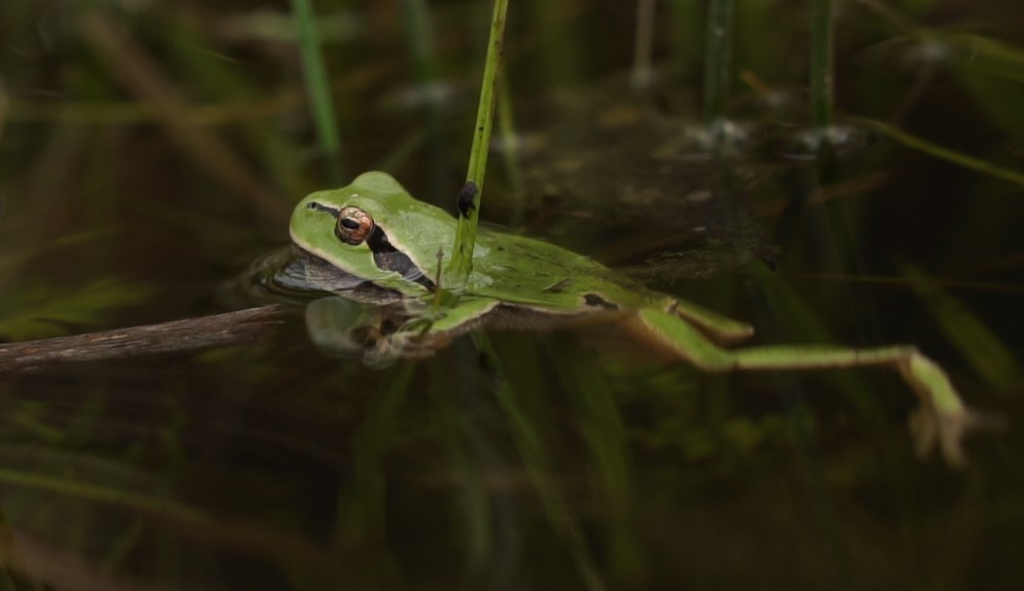
During the 20th century, the species actually disappeared in Latvia due to the increase in the intensity of agricultural activity. Since then, the entire modern population of Hyla orientalis in Latvia has been created thanks to the reintroduction of the species. Since 1987, the Ecological Laboratory of the Riga Zoo has been reintroducing the species in Latvia for several years, using specimens caught in Belarus. The reintroduction measures have paid off and the artificially created population in Liepāja has strengthened and is able to self-renew.

The common tree frog is easy to spot thanks to its loud voice and roaring calls that can be heard even more than 1 km away! The frog can reach length of up to 5 cm and the coloring of its back depends on the environment in which it lives. In cooler conditions it will be brown, but during a period of activity it may acquire the recognizable bright green color. The sides of the frog's body are decorated with a dark stripe, while the tips of the fingers have small suction cups that allow it to move along vertical surfaces.
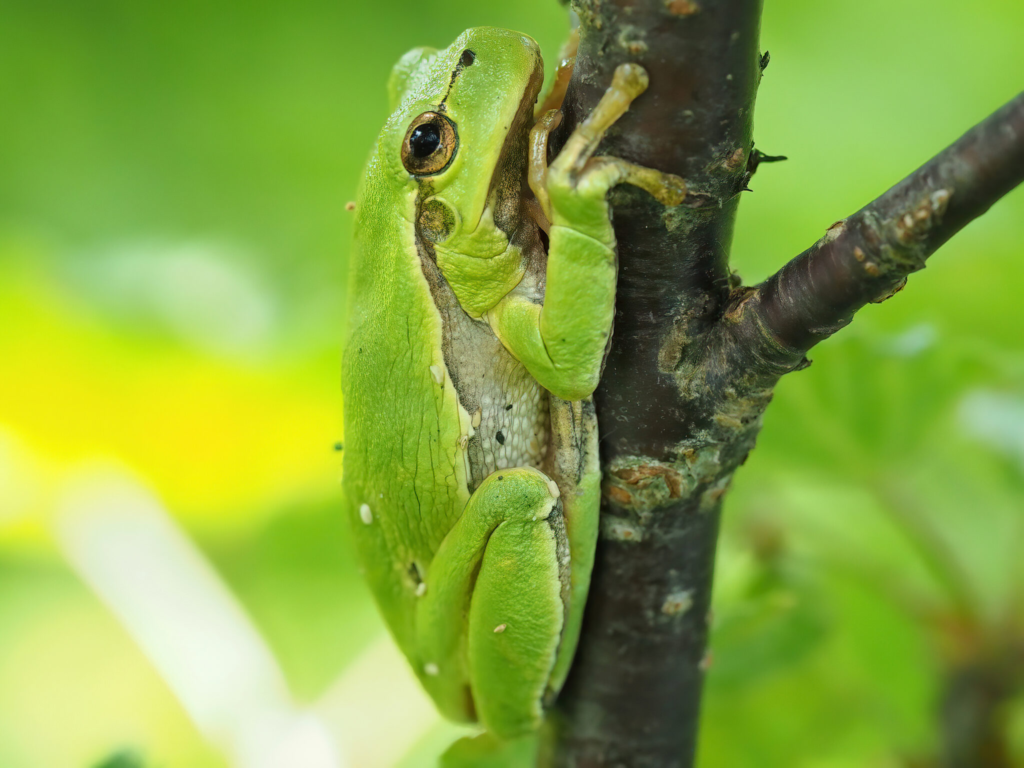
The common tree frog is a terrestrial animal that stays in water bodies only during the breeding season, which begins around the end of April and ends in the first half of June. Spawning sites are most often found in ponds surrounded by frequent bushes and willows. The maximum life span of this species in nature is 7-8 years, but in captivity the maximum recorded life span reaches 22 years.

Various species protection and reintroduction measures are also taking place in other parts of Europe. For example, in Germany, Belgium and the Netherlands, the population of the common tree frog species is restored within LIFE program projects.
We are happy to announce that 11th International Conference on Biodiversity Research has been concluded successfully. It was hosted by Daugavpils University and organized by the Institute of Life Sciences and Technologies of Daugavpils University as part of the LIFE FOR SPECIES project. The conference took place in a hybrid format, offering the opportunity to attend it both in person and virtually via Zoom platform. In total, the conference gathered more than 180 participants, 14 of which participated in person, but an impressive number of visitors also participated remotely.
17 countries were represented at the conference with posters and reports: Latvia, Lithuania, Estonia, Finland, Germany, Australia, Canada, Ukraine, Czech Republic, Norway, Spain, Portugal, India, Philippines, Taiwan, Kazakhstan, Uzbekistan.
The conference was opened on October 20 by Arvīds Barševskis, vice-rector of sciences (Daugavpils University), and the head of the UNESCO Department for Sustainable Development of Education - Professor Charles Hopkins also greeted the attendees with a video address. After the opening remarks, the conference continued with a plenary session, in which internationally renowned researchers and experts in their field participated with reports - William F. Laurance - College of Science and Engineering, James Cook University, (Australia); Rolands Ratfelders - Association "Green Freedom" (Latvia); Nicole Fenton – Associate Professor and Director of the Forest Research Institute at the University of Québec en Abitibi-Témiscamingue (Canada); as well as Thomas von Rintelen - Berlin Nature Museum, Institute for Evolutionary and Biodiversity Sciences (Germany).
On October 21, visitors were offered to listen to any of the 62 reports in one of the 5 parallel sections on a wide variety of research topics in the field of biological diversity. Among them were also 7 reports from representatives of the LIFE for Species project:
More information about the conference and its program is available here. Anyone interested can download the conference abstract book and get acquainted with the report summaries here. A collection of conference scientific articles is also under preparation.
We thank everyone for their participation and we wish you inspiration and success in the study of biological diversity, and we look forward to seeing you at future events!
The conference was organized by Daugavpils University within the LIFE project "Endangered species in Latvia: improved knowledge, capacity, data and awareness" (LIFE FOR SPECIES, project No. LIFE19GIE/LV/000857).
For the month of October we have decided to feature the only wild plum species in Latvia - blacktorn (Prunus spinosa).
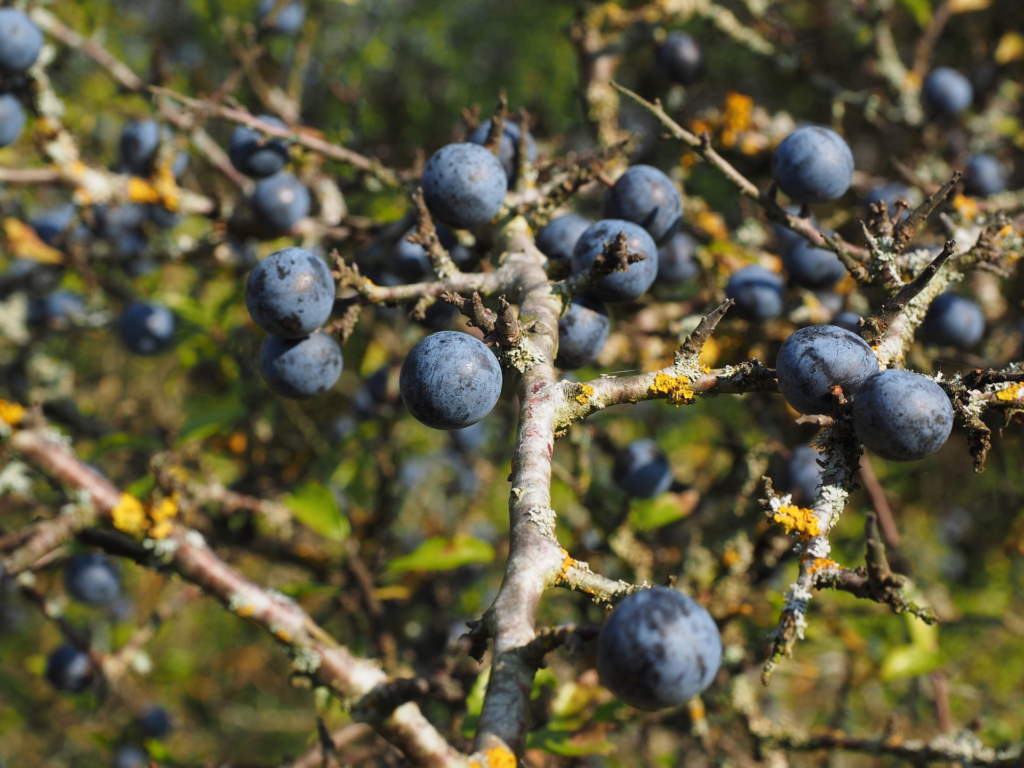
The blackthorn is a medium-sized species of the rose family plum that looks like a shrub or small tree. The plant can be recognized by its thorns, which also gave it its name. The bark of the bush is gray, but the buds of the plant are spiky. Of course, the plant is best known for its dark fruits, which are edible and often used in wine and jams in other parts of Europe.
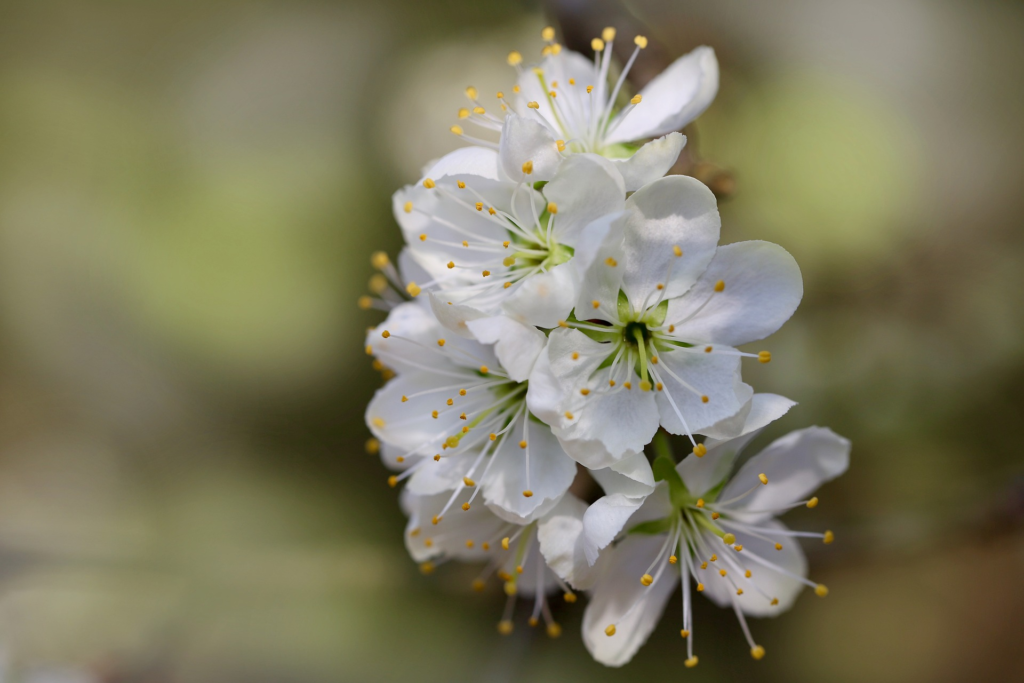
The blackthorn blossoms in late April and early May, but the fruits ripen very late - from the end of August until the beginning of October. Interestingly, the plant can live up to a hundred years! However, despite its longevity, thorn plums are extremely rare in Latvia and only a few specimens are found in nature. Meanwhile, in Scandinavia and elsewhere in Europe, the plant forms dense, prickly impenetrable clumps and is considered an endangered species. The distribution of the species in Latvia is currently being evaluated and its future protection status is not yet known.

Latvian forests are not very generous to mushroom pickers this autumn, however, if you get lucky you might stumble upon the rare but impressive species of this month - hen of the woods (Grifola frondosa).

Hen of the woods can be recognized by its many tongue-shaped caps, which have grown together on a single base. These mushrooms are one of the largest ferns and they can even exceed 60 cm in width. Each of the small mushroom caps varies between 3 - 14 cm. The surface of the mushroom varies between grayish-green and grayish-pink.
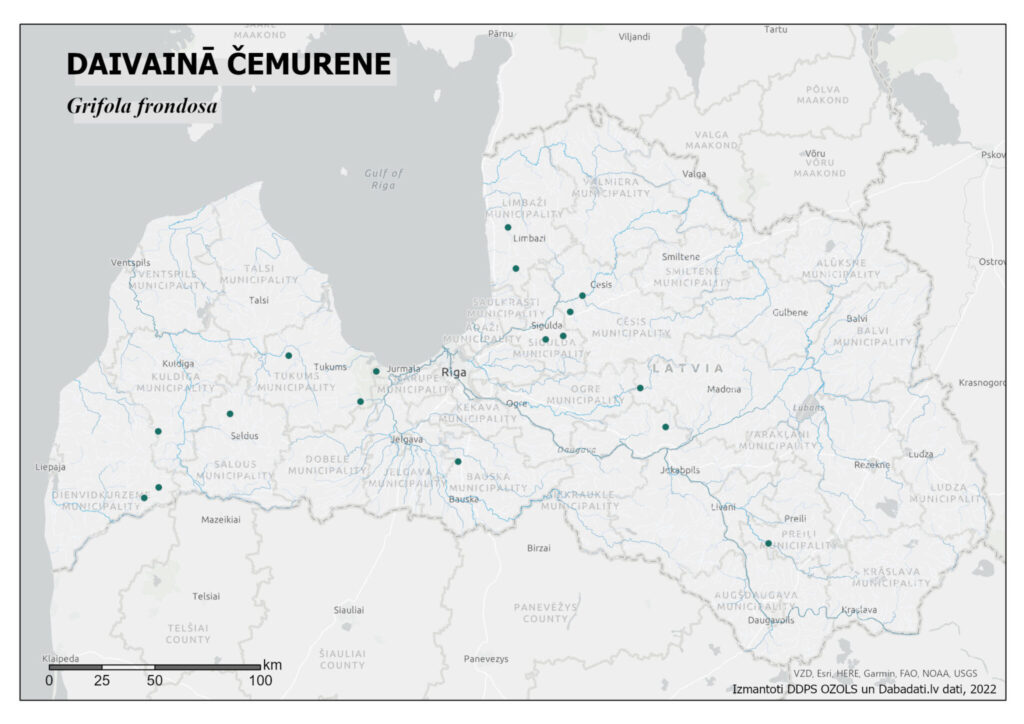
The species grow on live or very recently fallen trees. Unfortunately, this fungus can be parasitic and cause damage to the tree it has chosen as its home.
This species is protected and very rare. If you come across this species while going mushroom picking, take a picture and tell us about it! While still young, this mushroom is considered edible (it must be cooked beforehand), however, due to its status, it would be better to leave it in the forest.

At the end of August, LIFE for Species project team visited several LIFE projects in Sweden to share the experience of the project team, as well as to learn from representatives of the Swedish projects.
On the first day of the trip, the project team visited the Swedish Species Information Center in Uppsala, which is part of the Swedish University of Agricultural Sciences (SLU). The tasks of the information centre include the evaluation of the threat to species according to IUCN criteria, the analysis of data on the diversity of species, as well as other tasks related to the protection of species.

The head of the information center introduced the project team to the Swedish species evaluation system. The first species threat assessment in Sweden, using the methodology developed by the IUCN (International Union for Conservation of Nature), was completed in 2000 - it includes approximately 60,000 species and is renewed every five years. The last assessment was published in 2020, and it lists 22,000 species, of which around 4,700 are recognized as threatened.

During the meeting, experts from both countries shared their experiences and gave presentations on trends in the assessment of endangered species and their results. In general, changes to the list of protected species are very rare in Sweden, as it is a very complex process involving several institutions, companies and even political parties. Unlike Latvia, no "micro-sanctuaries" are created for the protection of species, but perhaps their introduction could be considered in the future.
The second day of the visit was spent meeting with representatives of two Swedish LIFE projects and visiting the locations of these projects. The first of the projects was the LIFE Bridging the Gap project, which aims to improve and restore 30 valuable oak groves in south-eastern Sweden, as well as to improve and create suitable habitats for several rare invertebrate species. They would serve as transfer points or "stepping stones" in space (i.e. between distant habitats of a species) and time (i.e. in one habitat where, due to the age structure of trees, a lack of suitable micro-habitats has been observed or expected in the future). The aforementioned solutions were discussed during the meeting during a visit to the Natura 2000 area in Tinnerö and Åtvidsnä nature reserve.
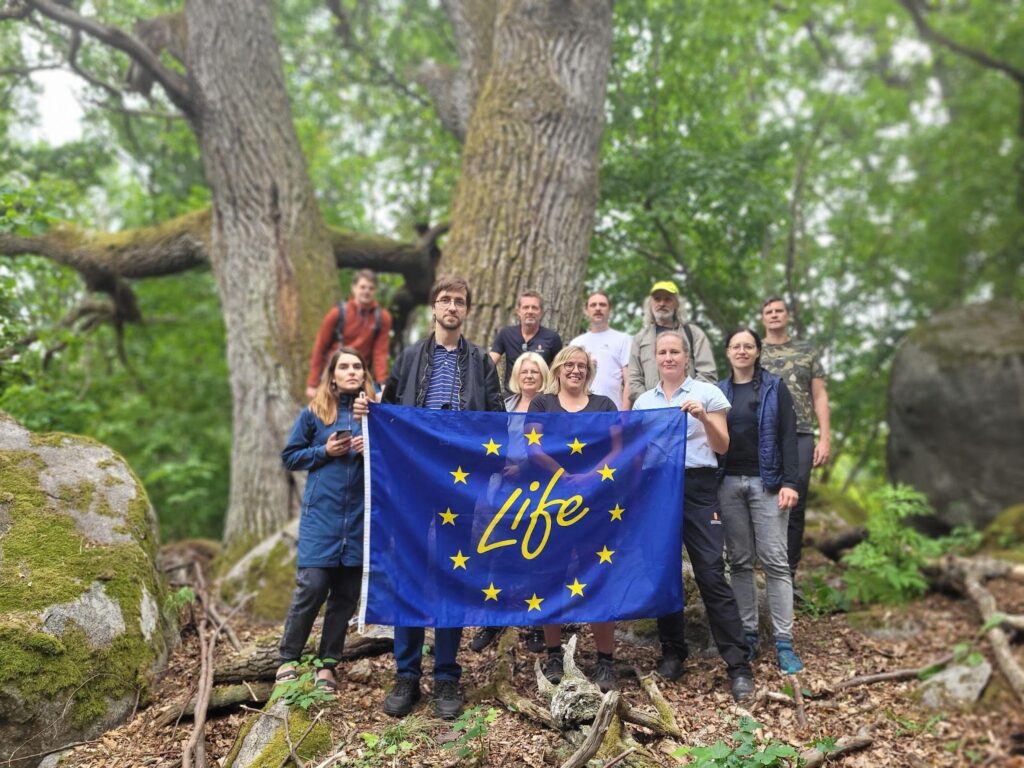
Anneli Lundgren, manager of the LIFE RestoRED project, presented the essence of this project to the representatives of LIFE for Species. Its aim is the restoration of habitats of European importance in Sweden and the promotion of populations of rare and protected species of invertebrates and lichens. To achieve this, various methods are used - reduction of spruce monoculture plantations, shading of old broad-leaved trees, mainly common oaks, planting of flowering plants, grazing of meadows, etc. In total, the project has 79 activity sites in the southern and central parts of Sweden, where it is planned to restore grasslands of EU importance in an area of approximately 11,000 ha.
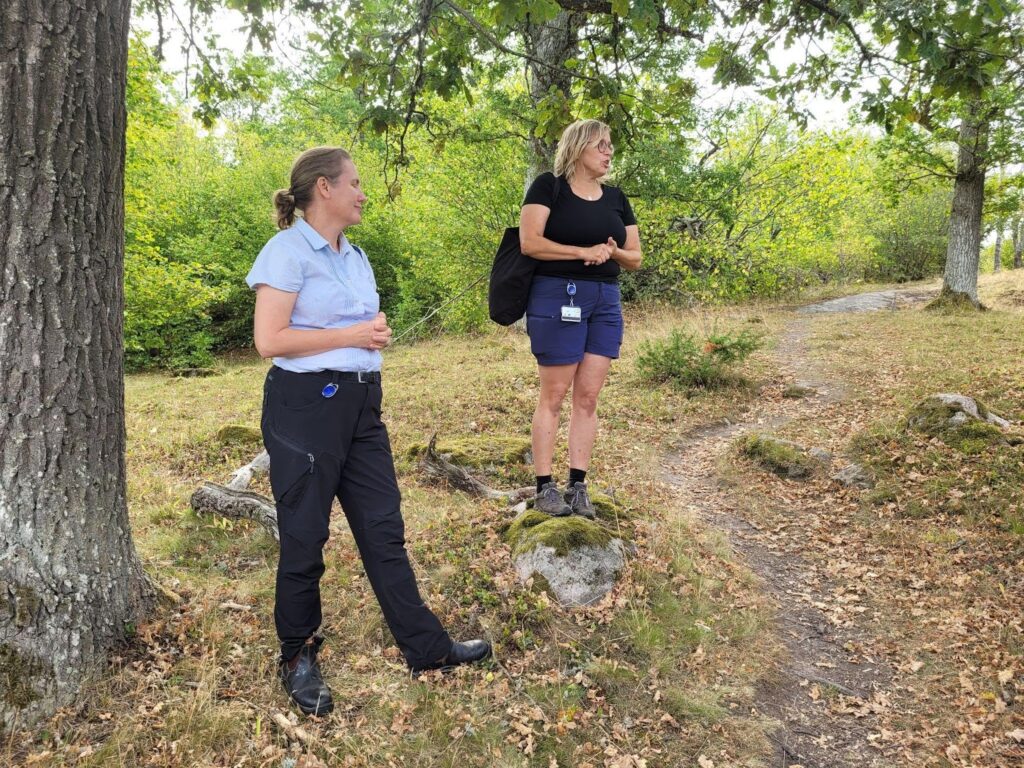
On the third day of the visit, a meeting was held with Magnus Melander, representative of the Swedish LIFE project Taiga. During the meeting, several pilot territories of the LIFE Taiga project were visited, where controlled burning was carried out as part of the project, with the aim of restoring forest habitats. During the visit, the role of fire in transforming the forest and providing habitats for various species was discussed, as well as an insight into the advantages of the controlled burning method and the specifics of its use.
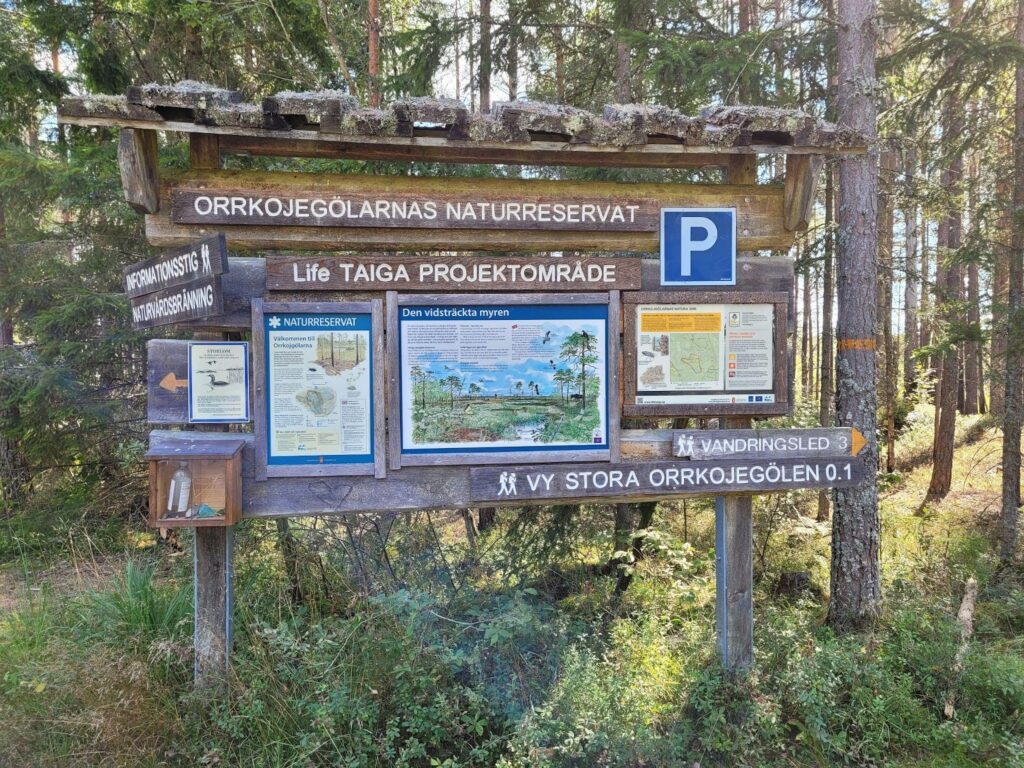
Controlled burning as a forest management and habitat restoration measure in Sweden is also included in the national FSC standard, and is also relatively widely used within projects, therefore there are individual service providers in Sweden who are specialized in performing such work. Often, even local government administrations have personnel trained to perform such work. In comparison, this method is practically not used in Latvia.
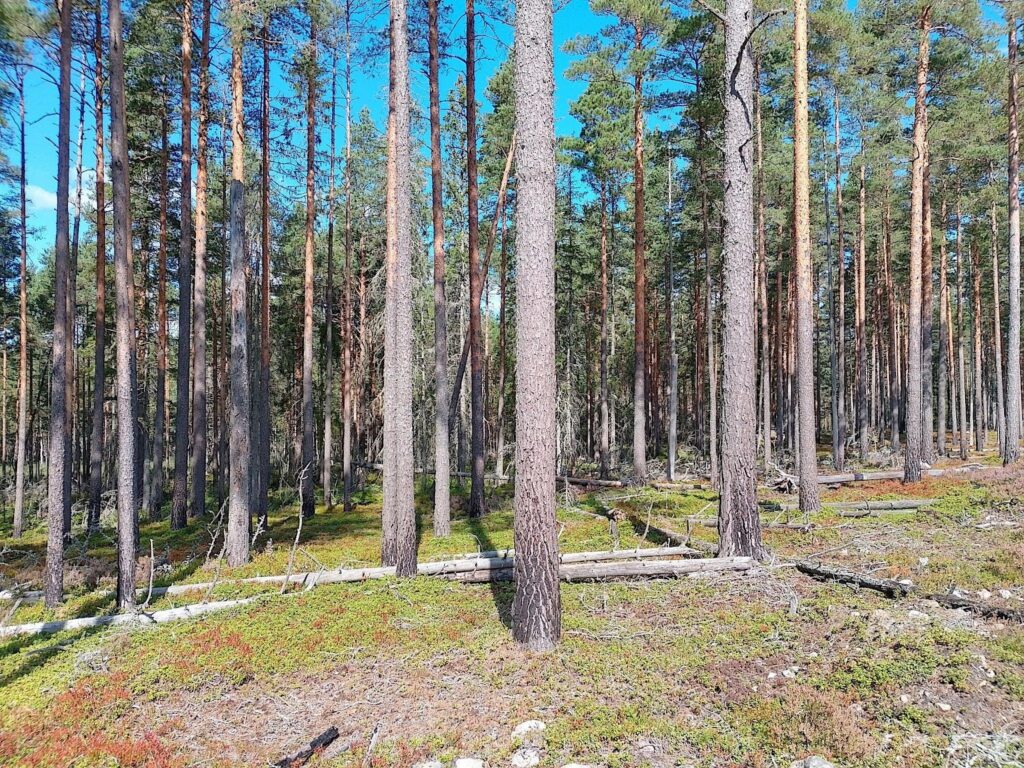
LIFE Taiga project ended in 2020, but the initiated activities will be continued on an even larger scale within the LIFE Taiga 2 project starting in the fall of 2022.
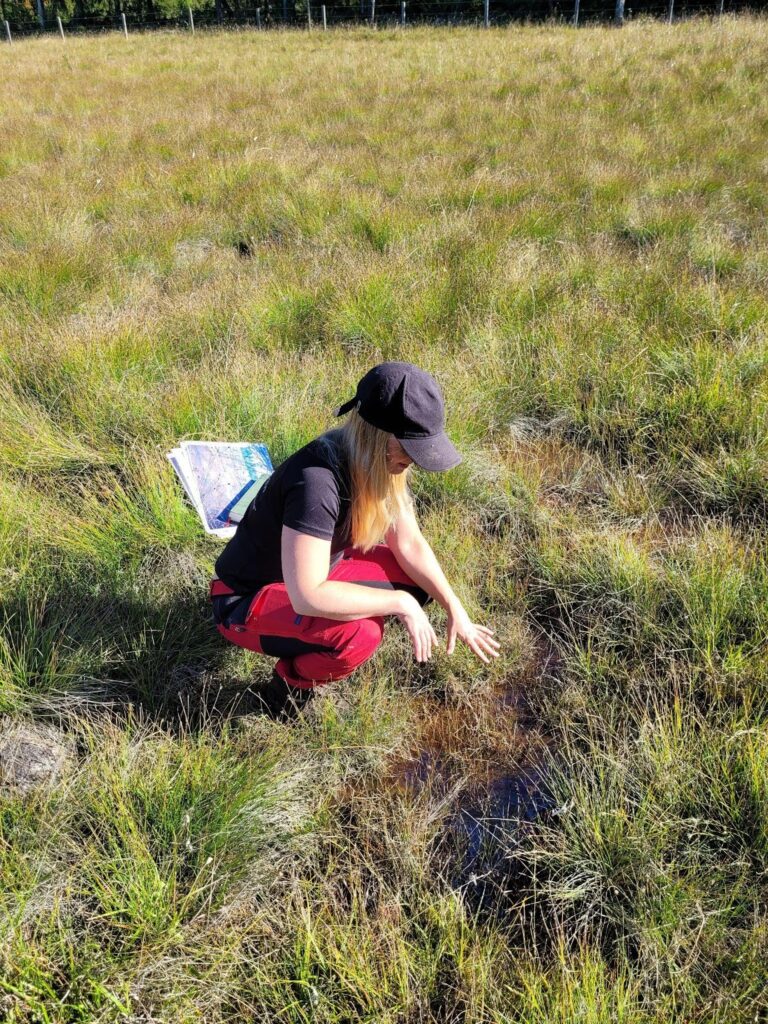
The networking trip was concluded with a visit to LIFE RestoRED project site "Hagebyhög". It is a Natura 2000 area, where large-scale works are planned to restore the calcareous herb marsh habitat and the Vertigo snail habitat included in the Habitats Directive. The site is bordered by a good-quality calcareous herb bog, where the management experience of this habitat type in Latvia and Sweden was discussed. It is important that various rare and protected species (various orchids, mosses, etc.) also grow and live in the swamp.
The knowledge, information and contacts established during the trip will be valuable in the further implementation of the LIFE FOR SPECIES project.